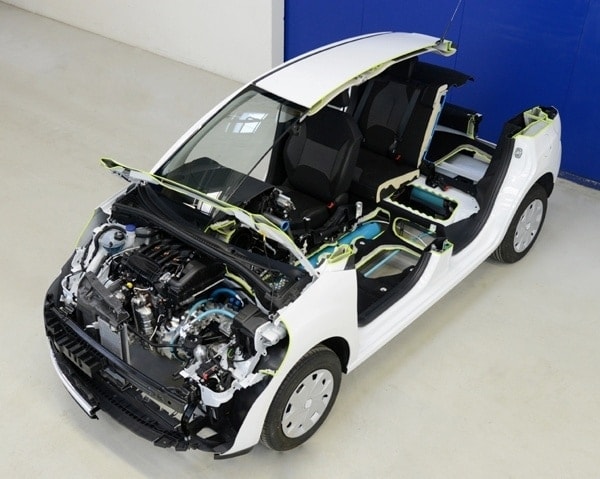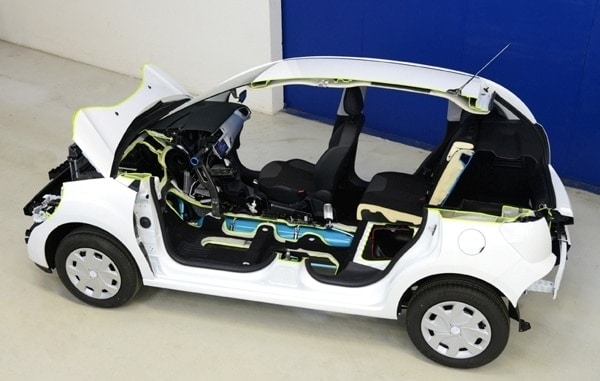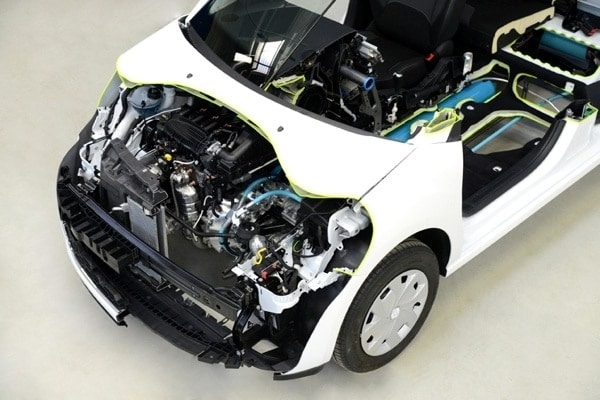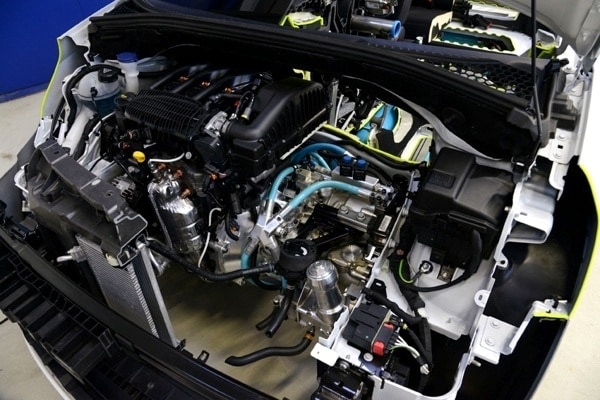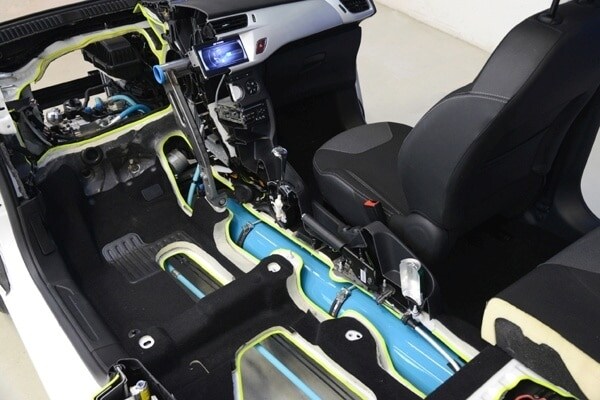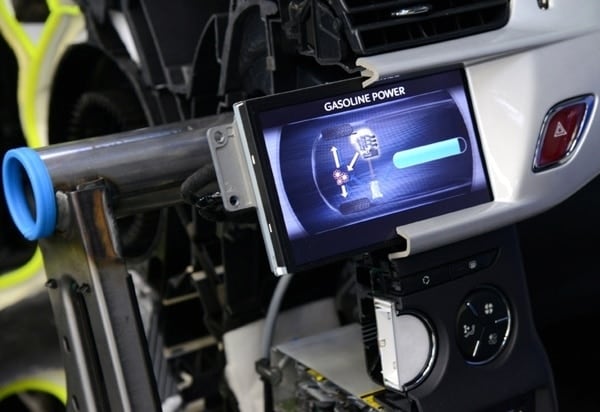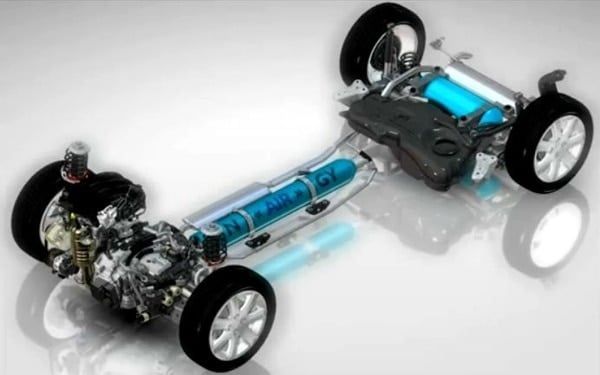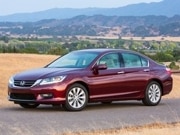Working with strategic supplier partners Bosch and Faurecia, PSE Peugeot Citroen has unveiled a new form of what it claims will be a super-clean, extremely efficient and very affordable form of hybrid drivetrain technology that uses a conventional internal combustion engine and compressed air for motive power. Intended for smaller B- and C-segment vehicles with output of up to 110 horsepower, it’s designed to operate in three modes: internal combustion, compressed air only or a combination of the two. Mechanically, the package consists of a small gasoline engine – which here was teamed with an automatic transmission — and a compressed air reservoir that effectively replaces the battery pack used in a conventional hybrid.
Like virtually every other gas/electric setup, the PSA Hybrid Air system also incorporates regenerative-braking functionality. Only here, it’s used to replenish the contents of a centrally-mounted high-pressure compressed air cylinder as well as the rear-mounted low-pressure secondary reservoir by means of a built-in two-way pump.
See: Check out the video of the PSA system in action
In addition to requiring only minimal redesign work on a conventional platform like the Citroen C3 or Peugeot 208, the automaker says this type of Hybrid Air vehicle would be able to operate between 60-80 percent of the time in city driving environments as a true zero-emissions transport module. It also would generate a 45-percent savings in relative fuel usage and enjoy up to a 90-percent increase in range compared to a similar vehicle with only an internal combustion engine. PSA Peugeot Citroen already has filed 80 patents for its Hybrid Air system. It plans to start fitting the package into several of its B-segment models in 2016 and is open to licensing the technology to other automakers.
You Might Also Like…
10 Coolest Cars Under $25,000
Cars with New Looks for 2013
10 Best Car Deals of the Month
